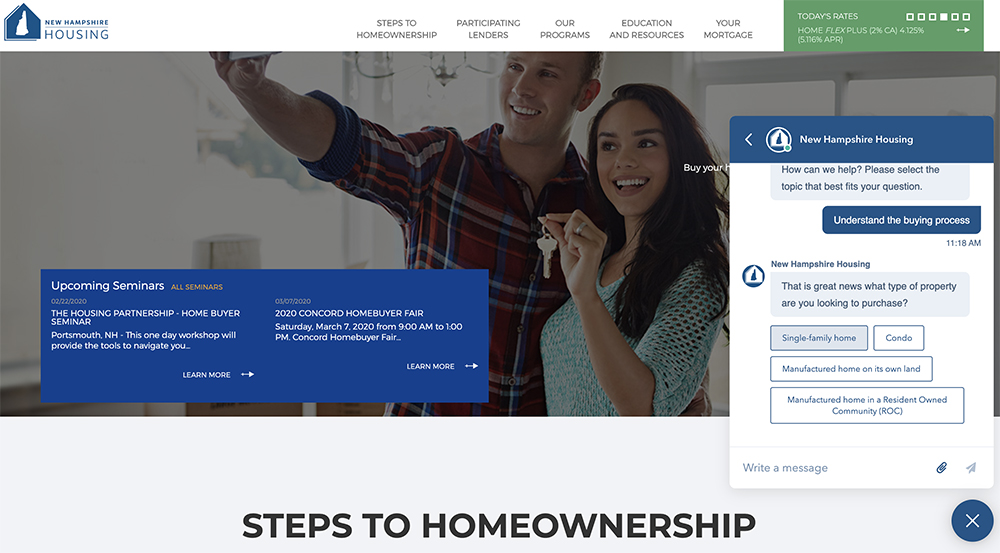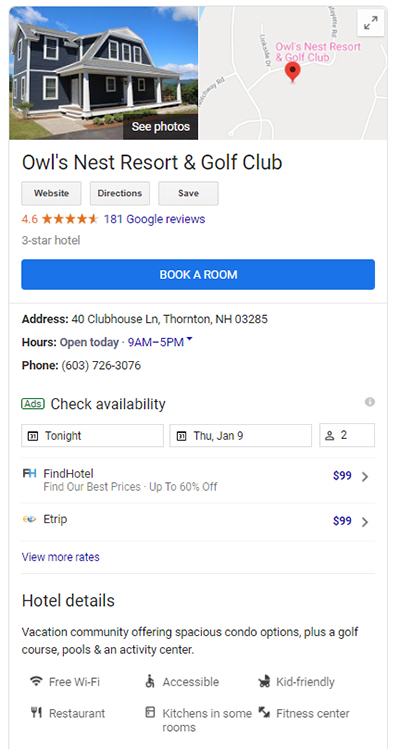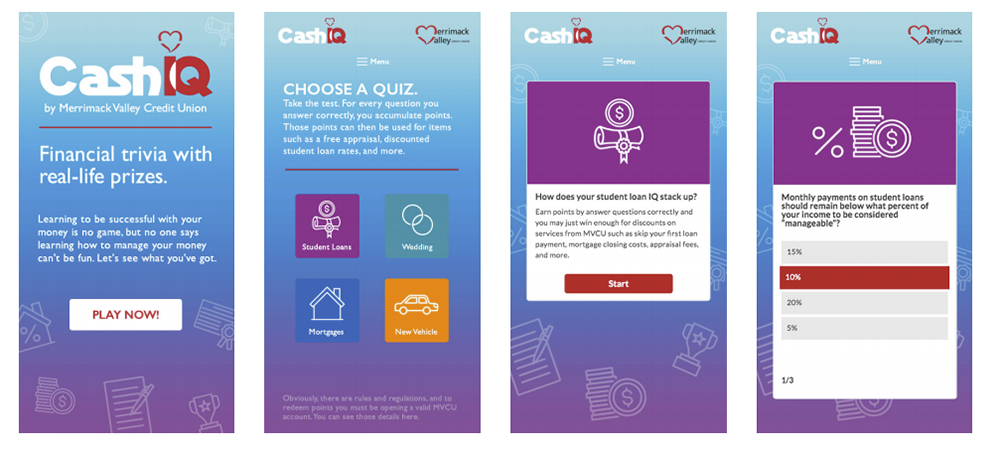 Chatbots are one way websites can be more interactive. Courtesy of Wedü.
Chatbots are one way websites can be more interactive. Courtesy of Wedü.
Cutting through all the marketing noise to be seen or heard is hard enough, but the real trick is not only to get customers to notice you but to actually engage with you.
Companies are getting creative to engage with customers, from selfie stations to the gamification of online ads. And while the most effective way of interacting with customers will vary by business and customer base, getting on the right engagement path starts with data.
“Data is really the special sauce today,” says Stephanie McLaughlin, principal of Savoir Faire Marketing/Communications in Manchester. “The way to get people to engage with your marketing efforts is to make those efforts more targeted.”
She says any company’s prospect list is a large group of people and not all of them will be engaged and motivated to buy by the same kinds of messages. Companies need to mine their data to discover the different groups of people that make up their prospects and develop marketing strategies that will appeal to those groups.
That data could include ages, geographical location, job titles, the last time they purchased from the company or how much they purchased. “All those parameters or data points can help you segment out smaller groups to create messaging that is more direct and is more relevant to them,” McLaughlin says.
While Google Analytics can provide insight about what is happening on your website, McLaughlin recommends purchasing software that allows a business to identify individuals once they have interacted with the site and allows their activity to be tracked so a company can see what engages them. “If I can learn about you, I can craft a more targeted message that is relevant to you. That starts to get people’s attention,” she says. (For more information about using data to drive marketing, see story on page 18.)
 Online Engagement
Online Engagement
People live rich digital lives, and it is essential that companies make sure their online presence is ready to engage them. A good place to start is by optimizing the Google My Business listing (pictured left, courtesy of SilverTech) to include more than just the basic hours, address and contact info, says Erin Presseau, the director of digital marketing at SilverTech in Manchester. Recently added features allow businesses to include buttons for “request a call” or “request a quote,” and for restaurants to create a reservation.
About 40% of searches are done by voice now so businesses need to make sure their website is configured so customers interacting with virtual home assistants like Alexa and Google Home will be more likely to find it, Presseau says. That can involve reworking the underlying code of the website so that things like address and price data are properly marked, making it easier for specific questions to be answered, Presseau says. She also suggests creating a thorough but conversationally written FAQ section that search algorithms can use to answer verbal inquiries.
Presseau stresses companies need to make sure their landing page is up to par. If they’re driving traffic to their website but it isn’t dynamic or user friendly, they may be spending money on eyeballs but not converting any into sales. She says companies are often so focused on launching a new marketing campaign that they neglect to think about the destination.
One way to make a site more interactive is with chatbots, says Sean Owen, owner of the Manchester-based marketing firm Wedü. Chatbots answer basic questions for customers while also gathering important data about them, which can then be used for more effective marketing in the future.
It is important, Owen says, to delay the appearance of the chatbot in order to be effective. Let the visitor absorb some information on the website first, and let them travel to certain pages before presenting them with a chatbot offering to help.
Interactive Ads
Marketers are finding ways to make online and television ads more interactive and using data to better identify what kind of advertising and content is of most interest to an individual.
Many people are on mobile devices while watching television, and if those devices are connected to a smart TV, it can track any activity on its screen through automatic content recognition, according to a 2018 New York Times article. It is the same technology that tracks viewing habits to provide more relevant ads and content.
Those ads can then show up on the mobile device, allowing viewers to click and interact with the advertiser, says Mike Stevens, executive director of strategic planning, media and account services at GYK Antler in Manchester. Comcast and streaming services also offer a service that allows viewers to interface with a TV ad to learn more about a product, he says.
Mobile ads and rich media can be fun and interactive, Stevens says, like having a bottle of Sweet Baby Ray’s buffalo sauce tip and pour as the user tips and angles their smart phone. Ads can even be turned into games, where users earn points that can be redeemed for a discount coupon or a free quote.

Educational mobile games, such as this one from Merrimack Valley Credit Union, allow players to earn rewards or prizes. Courtesy of Wedü.
Owen says games can also be educational, such as a mortgage lender educating a millennial audience about buying a home with an ad structured as a trivia game, allowing players to earn a free appraisal.
Stevens says it is important that a campaign or a digital ad aligns with the brand or product. Too often, companies try to be too cute or use technology just for the sake of it and miss the mark on creating a unique brand experience. “You want to make sure that your brand aligns with your interactivity,” he says.
Creating an Experience IRL
And while many focus marketing efforts online, Stevens says companies can also engage customers with experiential marketing. “There’s endless options through experiential,” he says.
L.L. Bean set up a successful pop-up shop outside Faneuil Hall in Boston during the holiday season where visitors flock to enjoy the holiday light show. It offered 20% discounts off boots, slippers and outerwear, and provided free gift wrapping, Stevens says.

L.L. Bean holiday pop-up shop at Faneuil Hall Marketplace in Boston. Courtesy of L.L. Bean.
Companies also use 3D billboards that change messages when the viewer changes position. A curious reader will engage with it by literally moving a few steps to get a different perspective.
“Making marketing more interesting for the consumer to engage with is what we’re seeing,” says Owen. He says selfie stations are another good way to get customers engaged with a brand or a particular product by blending an experience with social media. Companies can offer incentives for customers to take selfies at a certain place in a store or cafe using hashtags and a call to follow the company’s social media account.
“They’re highly effective,” Owen says, in elevating a brand online by setting up stations in high-traffic areas, or converting sales of particular products by setting up stations where those products are sold.
Another analog way to engage customers is to have actual people, brand ambassadors, available in stores to talk to customers about the product. Short of that, companies can install tablet kiosks that customers can interact with to answer some basic questions. Those same tablet kiosks can be set up to ask for the customer’s email address to sign in and later send notifications or reminders, Owen says.
However, companies need to be clear about what they are trying to achieve when using experiential marketing and make sure the experience aligns with those goals.
“Consumers today are sophisticated. The know when they are being marketed to,” says McLaughlin. They are happy to accept free swag or a free experience, but, she says, they won’t necessarily give brand loyalty in return.
